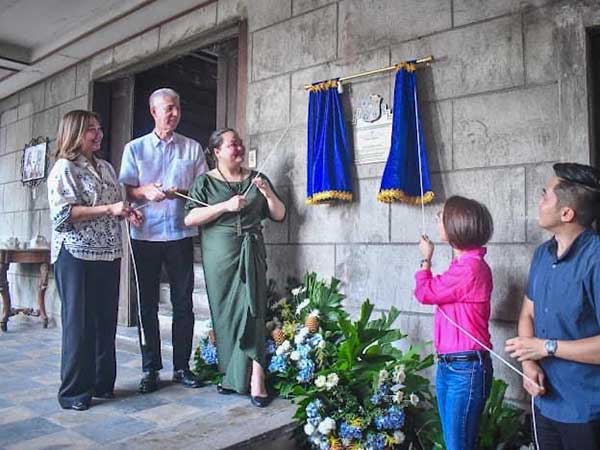
By Glazyl Y. Masculino
BACOLOD CITY – Seven landmarks in Negros Occidental have been tentatively listed as potential UNESCO World Heritage sites, as part of the “Sugar Cultural Landscape of Negros.”
These landmarks include the Victorias Milling Company (VMC) in Victorias City, Hacienda Rosalia in Manapla, the Historic Center of Silay City, the Hawaiian-Philippine Company sugar mill in Silay City, Balay ni Tana Dicang and the Aniceto Lacson Ancestral House in Talisay City, and Yulo’s Park in Bacolod City.
During the presentation of the world heritage bid for the sugar cultural landscape of Negros and Panay Islands held last week at Negros Residences, Governor Eugenio Jose Lacson emphasized the inseparable connection between the history of Negros Occidental and the sugar industry.
“As one of the country’s significant agricultural commodities, sugar has experienced both golden and challenging days. Despite various factors affecting the trade, the sugar industry has persevered,” the governor said.
Lacson said the sugar industry has been a cornerstone in the history of both Negros and Panay, driving economic progress and cultural development.
He pointed out that the vast sugarcane fields, grand ancestral homes, heritage sites, and even the laidback lifestyle all tell the story of how communities have been shaped by this industry, creating a lasting influence that spans generations.
“As we pursue this world heritage recognition, we are not only commemorating our heritage or gaining acknowledgment in the world, but also reaffirming our dedication to safeguarding our history for present and future generations,” he added.
In addition to the seven listed sites, Balay Ni Tan Juan in Bago City and the Provincial Capitol in Bacolod are also being considered for inclusion in the list.
Meanwhile, the Bacolod city government has submitted four cultural properties significant to Bacolod’s heritage to the Philippine Registry of Cultural Property (PRECUP).
These properties include the Bacolod Plaza Bandstand, the Bells of San Sebastian Cathedral, Luzuriaga Cemetery, and Nuestra Señora de la Consolacion or La Consolacion College (LCC).
PRECUP serves as the central repository of information pertaining to cultural properties in the Philippines deemed significant to cultural heritage.
Last week, the National Museum of the Philippines (NMP) unveiled a national historical marker at Yulo’s Park in Barangay 14, Bacolod City, 12 days after it celebrated its 105th anniversary on August 10.
Lawyer Cecilia Tirol, director of NMP Visayas Museums, led the unveiling of the marker, along with the Yulo family, represented by Ynes Reyes Ganuelas, and local government officials, including Governor Lacson and Bacolod Councilor Em Ang, chairperson of the City Council Committee on History, Culture, and Arts, on August 22.
Yulo’s Park, now considered an Important Cultural Property (ICP) of Bacolod, was established by the late Don Mariano Yulo, a former provincial governor and senator during the Commonwealth period.
The site, established in 1919, earned its name as it was once a favored gathering place before the Bacolod public plaza was built.
Don Mariano’s son, Alfredo Yulo, also played a significant role in the city’s history, serving as mayor of Bacolod from May 27, 1940, to May 29, 1942.
In her message, Tirol emphasized the importance of preserving such landmarks, stating that losing a tangible heritage site means losing much of the story that goes with it.
“If we also lose the identity and the story of who we are, you, Negrenses, hold the key to ensuring that this story is enriched and kept alive,” she said.
Ganuelas expressed deep gratitude for the support and hopes to restore Yulo’s Park to its former glory, reviving history to share with future generations.
Earlier, Ang mentioned that they are collaborating with the owners for the restoration of the site, aiming to make it a tourist destination.
However, she noted that the city will need to discuss the budget allocation for the restoration.




















